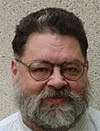Oh for the Love of Dog!
The Disney studios have crafted some pretty atrocious bits of celluloid lately, including about 75% of the films of Cuba Gooding. Mercifully he’s spared “Underdog”; I wish that we were.
It’s no surprise that an increasingly illiterate Hollywood would eventually latch onto one of the true bargain-basement animations for feature material, but the resulting film begs the question: why would any studio, much less Disney, make a feature based on a one-joke cartoon if it didn’t get the one joke?
Sherman, set the Wayback Machine for 1964, when “Underdog” popped up on suburban TV screens. It was, simply, a rather lame and anemic parody of superhero toons, most notably the genre champ “Superman.” In this case, the hero’s alter ego was apparently named Humble and Lovable Shoe Shine Boy, and was voiced by the least macho actor in Hollywood: Mr. Milquetoast himself, Wally Cox. However, when he pops a vitamin pill(!), puts on the Spandex (in his case, extremely baggy Spandex) and starts flying around as Underdog, for some reason delivering almost all of his lines in rhymed couplets, he speaks with the voice of … Wally Cox. This could have been funny if someone like Mel Brooks got hold of it (which he did, a few years later, in another superhero parody, a live TV series called “Captain Nice”.) Similarly, the heroine, a news anchor named Sweet Polly Purebred, gets kidnapped and put into dire peril on a regular basis, and calls for help by singing a variant of the children’s song “Where Oh Where Has My Little Dog Gone?”
That’s it; that’s the sum total of the series, produced by something called Total Television and animated in Mexico by a minimalist studio apparently staffed by animators who didn’t make the cut for “Rocky & Bulwinkle.” The thing became something of a cult classic; would that it had stayed as such.
Now, we have a fancy-schmancy CG beagle zipping through the skies of some urban metropolis or other. The Alpha Dog is no longer an anthropomorphized Shoe Shine Boy; he’s a dog named Shoe Shine, who gets caught in a lab experiment gone wrong. (Why couldn’t he have been bitten by a radioactive flea and done a Spidey parody instead? Or would that have unduly taxed the trio of writers who cooked up this mess? The trio consist of two newbies and one guy whose major credit to date was “Zoom: Academy for Superheroes”; enough said. Director Frederick DuChau, meanwhile, helmed the 2005 CG critter movie “Racing Stripes”.)
Once again, we have millions of dollars worth of CG spent to resurrect a truly minor bit of cel animation. It’s like using a Ferrari sports car to pull a plow. It doesn’t get the job done and does the Ferrari more harm than good. Can Hollywood please, please consider its projects a bit more carefully next time?
It’s no surprise that an increasingly illiterate Hollywood would eventually latch onto one of the true bargain-basement animations for feature material, but the resulting film begs the question: why would any studio, much less Disney, make a feature based on a one-joke cartoon if it didn’t get the one joke?
Sherman, set the Wayback Machine for 1964, when “Underdog” popped up on suburban TV screens. It was, simply, a rather lame and anemic parody of superhero toons, most notably the genre champ “Superman.” In this case, the hero’s alter ego was apparently named Humble and Lovable Shoe Shine Boy, and was voiced by the least macho actor in Hollywood: Mr. Milquetoast himself, Wally Cox. However, when he pops a vitamin pill(!), puts on the Spandex (in his case, extremely baggy Spandex) and starts flying around as Underdog, for some reason delivering almost all of his lines in rhymed couplets, he speaks with the voice of … Wally Cox. This could have been funny if someone like Mel Brooks got hold of it (which he did, a few years later, in another superhero parody, a live TV series called “Captain Nice”.) Similarly, the heroine, a news anchor named Sweet Polly Purebred, gets kidnapped and put into dire peril on a regular basis, and calls for help by singing a variant of the children’s song “Where Oh Where Has My Little Dog Gone?”
That’s it; that’s the sum total of the series, produced by something called Total Television and animated in Mexico by a minimalist studio apparently staffed by animators who didn’t make the cut for “Rocky & Bulwinkle.” The thing became something of a cult classic; would that it had stayed as such.
Now, we have a fancy-schmancy CG beagle zipping through the skies of some urban metropolis or other. The Alpha Dog is no longer an anthropomorphized Shoe Shine Boy; he’s a dog named Shoe Shine, who gets caught in a lab experiment gone wrong. (Why couldn’t he have been bitten by a radioactive flea and done a Spidey parody instead? Or would that have unduly taxed the trio of writers who cooked up this mess? The trio consist of two newbies and one guy whose major credit to date was “Zoom: Academy for Superheroes”; enough said. Director Frederick DuChau, meanwhile, helmed the 2005 CG critter movie “Racing Stripes”.)
Once again, we have millions of dollars worth of CG spent to resurrect a truly minor bit of cel animation. It’s like using a Ferrari sports car to pull a plow. It doesn’t get the job done and does the Ferrari more harm than good. Can Hollywood please, please consider its projects a bit more carefully next time?


